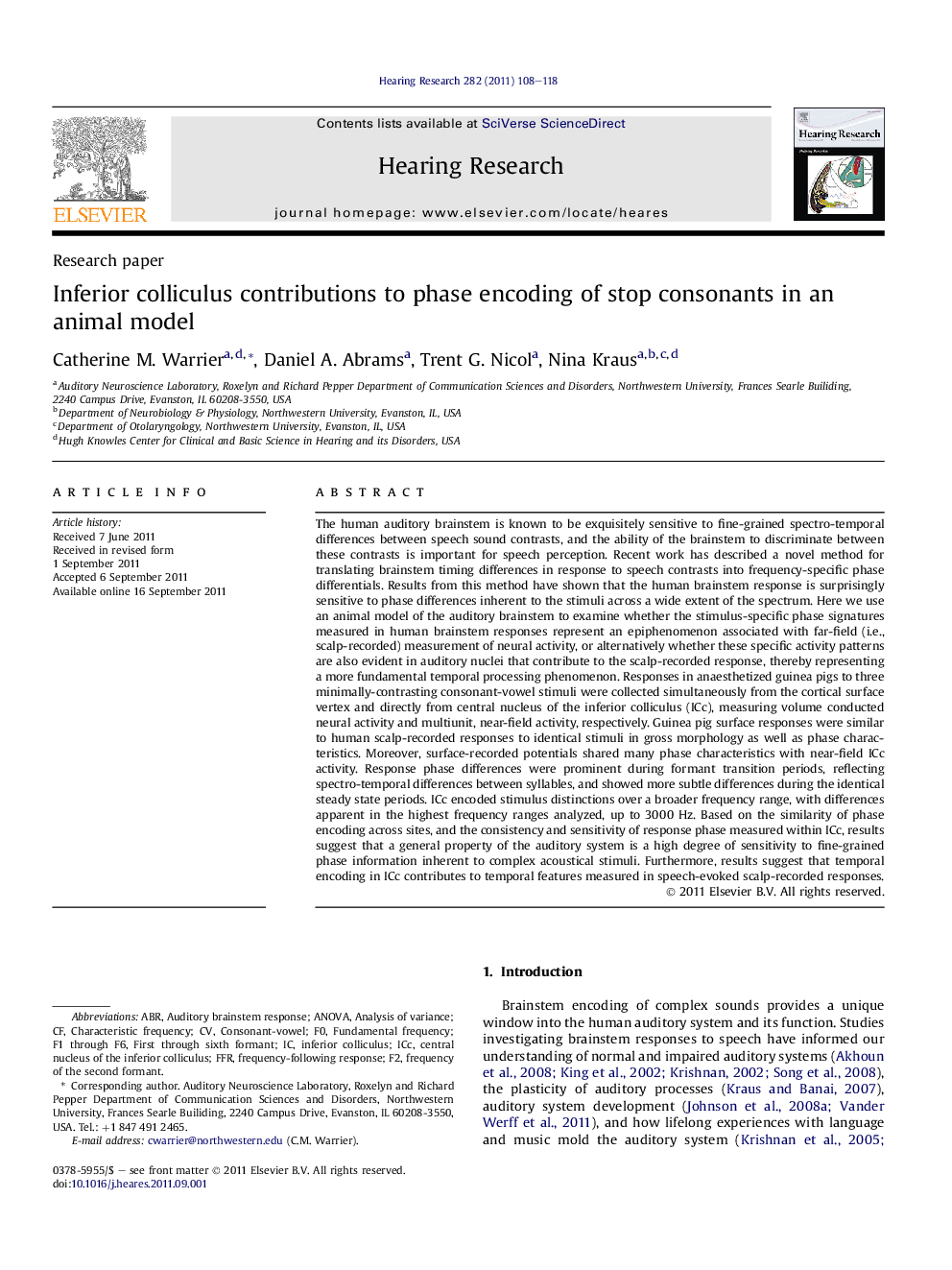| Article ID | Journal | Published Year | Pages | File Type |
|---|---|---|---|---|
| 4355428 | Hearing Research | 2011 | 11 Pages |
The human auditory brainstem is known to be exquisitely sensitive to fine-grained spectro-temporal differences between speech sound contrasts, and the ability of the brainstem to discriminate between these contrasts is important for speech perception. Recent work has described a novel method for translating brainstem timing differences in response to speech contrasts into frequency-specific phase differentials. Results from this method have shown that the human brainstem response is surprisingly sensitive to phase differences inherent to the stimuli across a wide extent of the spectrum. Here we use an animal model of the auditory brainstem to examine whether the stimulus-specific phase signatures measured in human brainstem responses represent an epiphenomenon associated with far-field (i.e., scalp-recorded) measurement of neural activity, or alternatively whether these specific activity patterns are also evident in auditory nuclei that contribute to the scalp-recorded response, thereby representing a more fundamental temporal processing phenomenon. Responses in anaesthetized guinea pigs to three minimally-contrasting consonant-vowel stimuli were collected simultaneously from the cortical surface vertex and directly from central nucleus of the inferior colliculus (ICc), measuring volume conducted neural activity and multiunit, near-field activity, respectively. Guinea pig surface responses were similar to human scalp-recorded responses to identical stimuli in gross morphology as well as phase characteristics. Moreover, surface-recorded potentials shared many phase characteristics with near-field ICc activity. Response phase differences were prominent during formant transition periods, reflecting spectro-temporal differences between syllables, and showed more subtle differences during the identical steady state periods. ICc encoded stimulus distinctions over a broader frequency range, with differences apparent in the highest frequency ranges analyzed, up to 3000 Hz. Based on the similarity of phase encoding across sites, and the consistency and sensitivity of response phase measured within ICc, results suggest that a general property of the auditory system is a high degree of sensitivity to fine-grained phase information inherent to complex acoustical stimuli. Furthermore, results suggest that temporal encoding in ICc contributes to temporal features measured in speech-evoked scalp-recorded responses.
► Phase-related sensitivity to speech is reflected at the surface and in near-field ICc responses. ► Surface-recorded brainstem responses are not an epiphenomenon of volume conduction. ► Near-field ICc responses encode stimulus distinctions more broadly than surface responses. ► CF region of ICc affects magnitude but not timing of responses. ► Phase properties of guinea pig responses are similar to those measured in humans.
